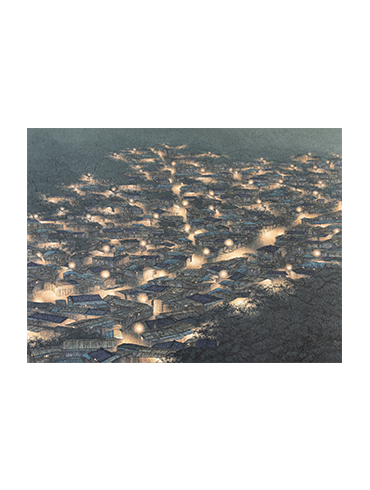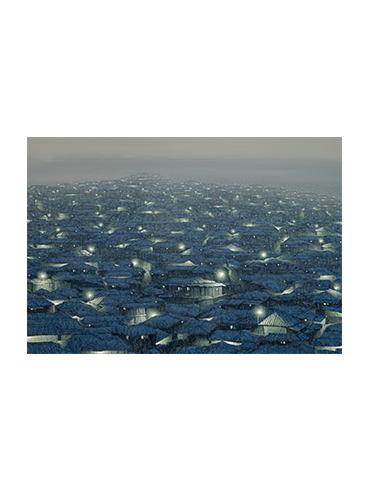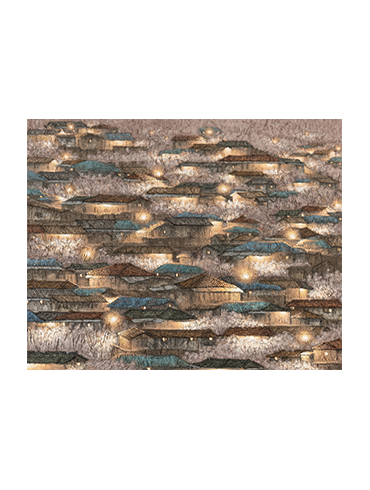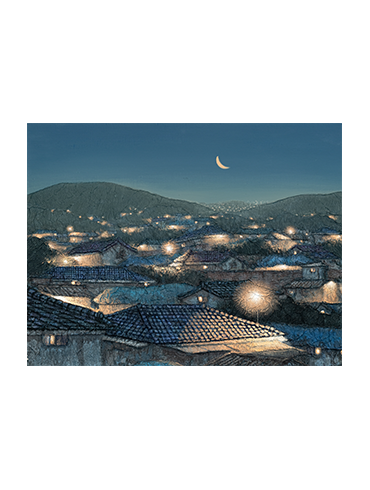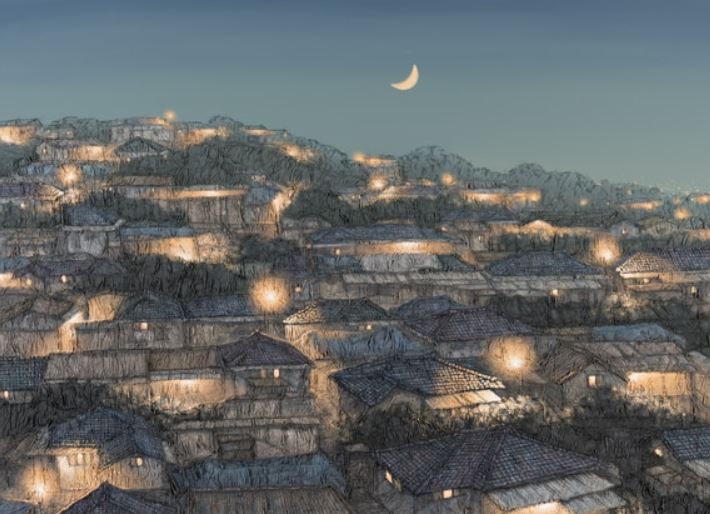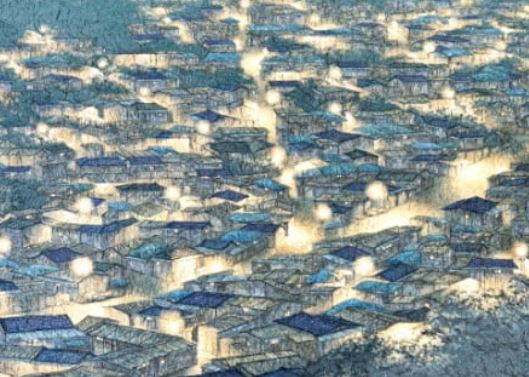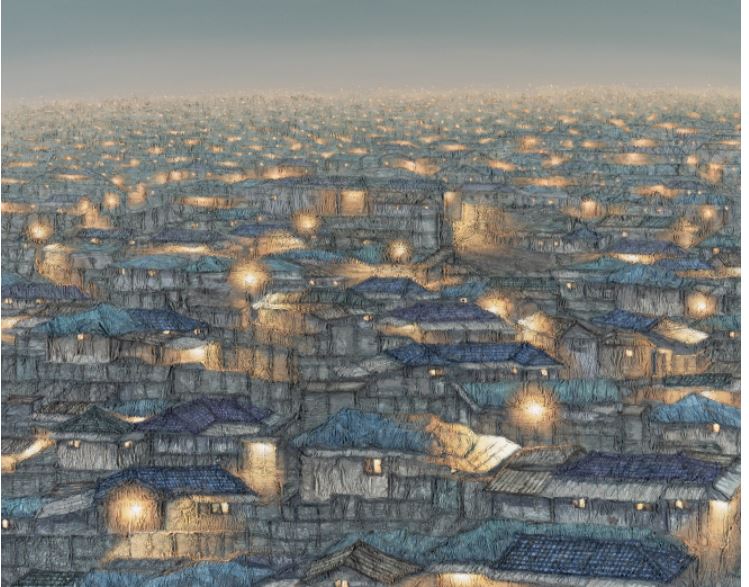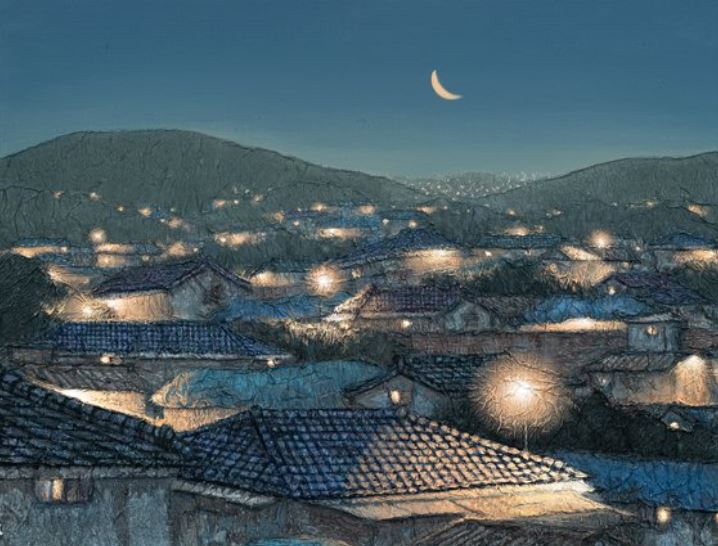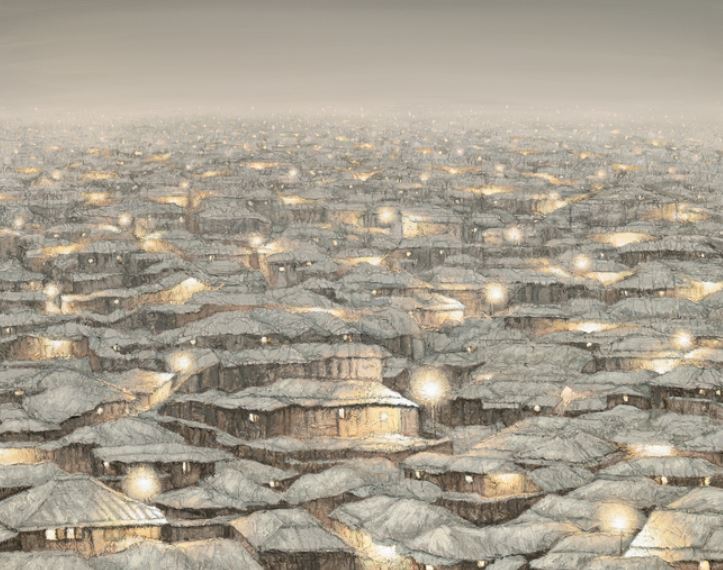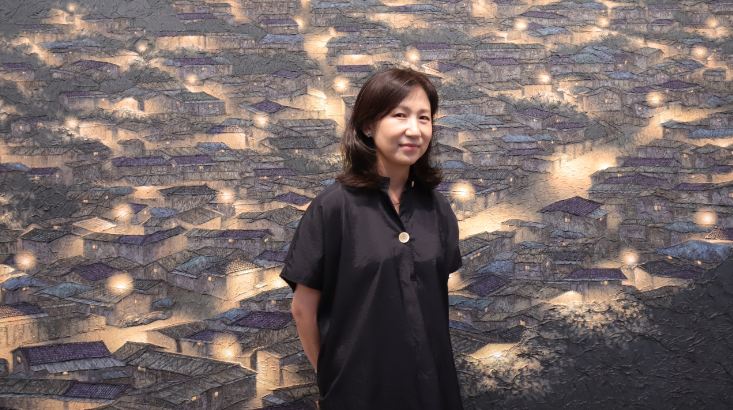정영주 작가는
캔버스에 종이를 붙여 산의 형상을 완성한다. 그리고 캔버스 하단에 종이를 붙이고 오려서 집의 형상을
완성한 후 아크릴 물감을 수십 차례 올려서 집에 생명력을 불어넣는다. 종이와 종이는 서로를 뿌리 삼아
기대며 일어선다. 집과 집은 서로의 존재를 온기 삼아 생명력을 발산한다. 집과 집은 서로 의지해서 화면을 가득 채우며 끝없이 이어진다. 그리고
마치 연못에 돌을 던지면 동심원이 연못 가장자리 끝까지 퍼지듯이, 불빛은 동심원처럼 우리의 마음속까지
울려 퍼진다. 정영주 작가는 산과 집을 종이로 하나씩 붙이고 무수히 거듭되는 붓질의 퇴적 속에서 전체
풍경을 완성한 후 최종적으로 불빛을 살린다. 어렴풋한 분위기는 마침내 총체적 생기를 얻어 끝없이 생동하는
우주적 풍경을 연출한다. 정영주 회화 속 불빛은 풍경의 눈(the
eye of the landscape)이다. 정신의 주재자(主宰者)이다. ... 정영주
회화는 정확한 재현의 목표를 시작으로 내적 진리(시적 진리)라는
최종적 관문에 도달한다. 그리고 우리는 정영주의 작품 속에 진입하여 수량적, 계측적, 인과적 사유의 습관으로부터 마침내 해방된다.
「Another World」 中 발췌
이진명 · 미술비평, 미학, 동양학





